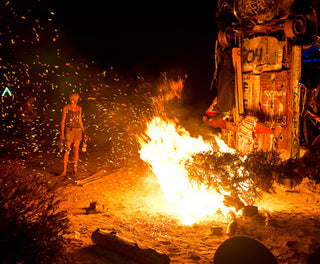NYC photographer Tod Seelie‘s unique eye for entropy and disarray has led to a diverse body of work that includes documenting New York City’s bustling punk and fringe underground alongside empty sites of neglect. Starting out as a sculptor interested in experiential, transformative spaces using light, Seelie eventually developed natural inclination from that into photography, which he has been working in ever since. His current undertaking is a monthlong residency at Superchief gallery’s LA location, which has had him stalking the city’s downtown, finding himself at backyard South Central LA punk shows, and capturing desert detritus in outer-LA’s Salton Sea. The photos he’s gathered from these explorations will be presented with his show “Outland Empire,” opening this Saturday, March 7, along with a zine launch, prints for sale, and a performance by noise/hip-hop duo Ho99o9.
We got a chance to sit down with Tod Seelie last week for an interesting discussion about photography pre-Flickr and post-Instagram, the changing world of image making, and the shifting backdrop of New York.
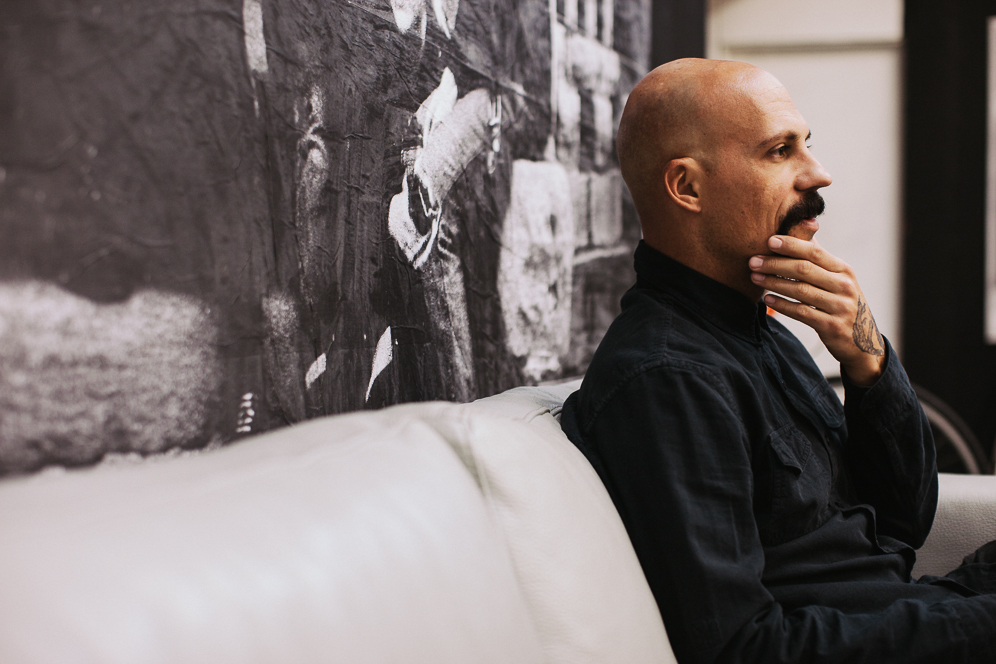
ALINA NGUYEN: Can you tell us more about “Outland Empire” and your residency at Superchief?
TOD SEELIE: the way the residency here tends to work is they bring in an artist to make a new body of work and then have a show at the end of it… I did a lot of prowling around LA at night and then went out to the desert for a week, so I shot out there for a while. Now we’re in the getting prints made, getting a zine made stage.
I noticed in a lot of your work it seems like you’re equally as interested in abandoned, neglected space as you are with crowded, people-oriented things. Visually what are you drawn to when it comes to those two things?
It’s very vague, on one hand, where it’s just an instinct of what I’m attracted to. But then it does get more specific and break down. One of the reasons I like abandoned or neglected spaces is they’re allowed to exist and develop their own character. It’s the entropy of decay over a time, so I find that a lot more interesting that manicured spaces that are heavily and controlled and maintained to look a certain way. So that’s part of the reason that I’m interested in the fringe landscapes.
With the people stuff it’s more of just where I find myself and where I end up. I’m pretty much just shooting the life I lead and where I want to go for fun. But I really like punk shows and exploring and doing stuff like that, so that’s naturally going to fall into the work that way.
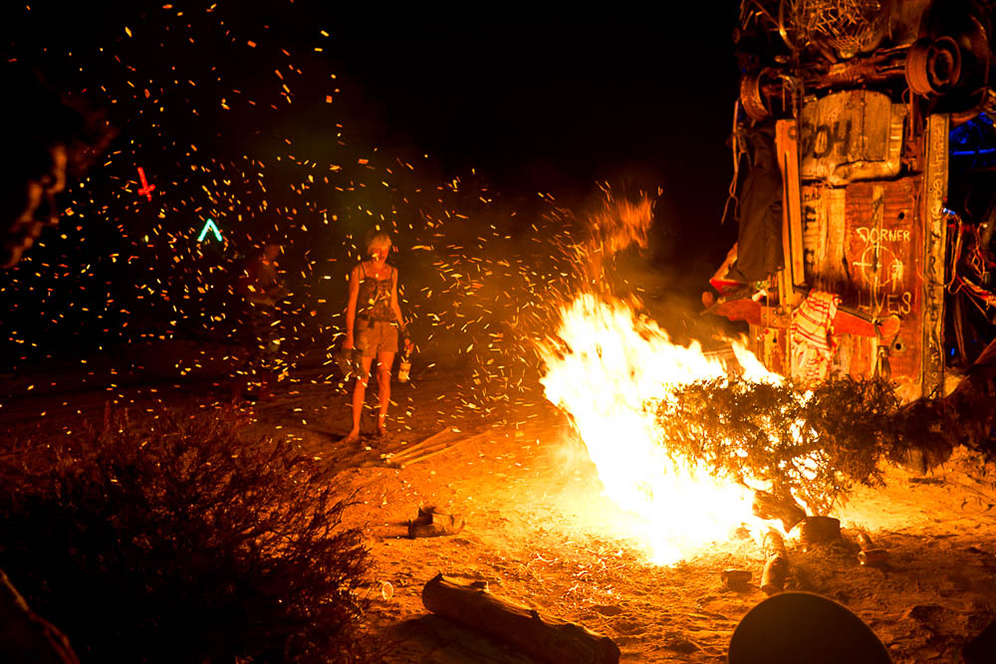
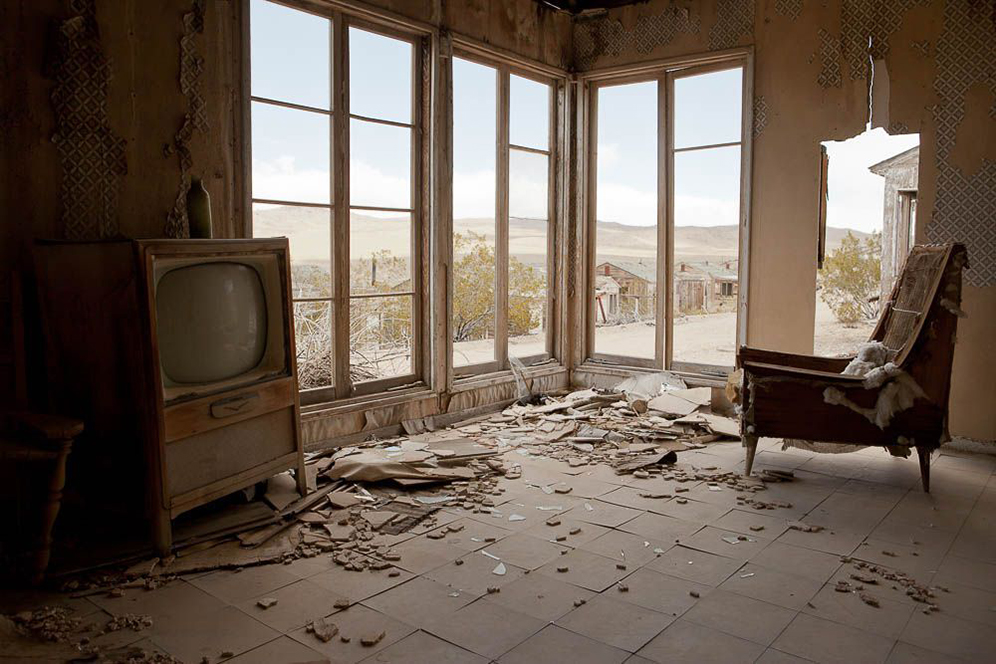
We were talking earlier about how this is the first time where you’ve come to LA specifically to do a project like this with photos. How do you feel about the landscape over here in contrast to what you’re used to?
That’s one of the reasons I like LA – it’s completely different than what I’m used to. I grew up in the Midwest and moved to the East Coast, so when I come to Southern California, it’s like coming to another country. So it’s infinitely interesting to me because I’m still just trying to understand it and get a feel for it. The light out here is just completely different. I think it’s partially because it’s summer all the time on a certain level, so you have that rich summer light. But there is the theory that West Coast light is very different that East Coast light, which I’m still possibly sold on.
There was that one painter – [Richard Diebenkorn]. He did all these West Coast landscapes with this certain palette. Part of the reason he did that is because he was like, “The light is completely different out here, it makes colors different.” I think he was post-abstract expressionist, he was around that era.
The plant life is different, the way the buildings are is completely different, everything’s really different. In New York, if you get a crazy sunset, everyone freaks out. Out here it’s like every freaking day, it almost gets boring after a while. [Laughs]
What is a highlight for you that you’ve noticed about the city this time around that you didn’t notice before?
I’ve been able to go further and dive a little deeper into the city than I’ve been able to in the past, so I’ve really enjoyed that. I mean, there are some nights when I go out and it’s really foggy that we don’t typically get on the East Coast, which I really enjoyed. There’s good mixed lighting out here at night, which I like. Just different types of lighting creating different color tones.
On a certain level, palm trees are still weird to me [laughs]. So even going out and finding railroad tracks with palm trees hanging over them is interesting. So it’s a little bit with fresh, outsider eyes that I’m enjoying the city. But at the same time, trying to get a handle on the vibe and the layout and the attitude. We don’t have Skid Row in New York City, so being on the edge of that, every day you go out and you’re absorbing more information and having a greater understanding of what this part of the city is like. That just keeps me continually interested.
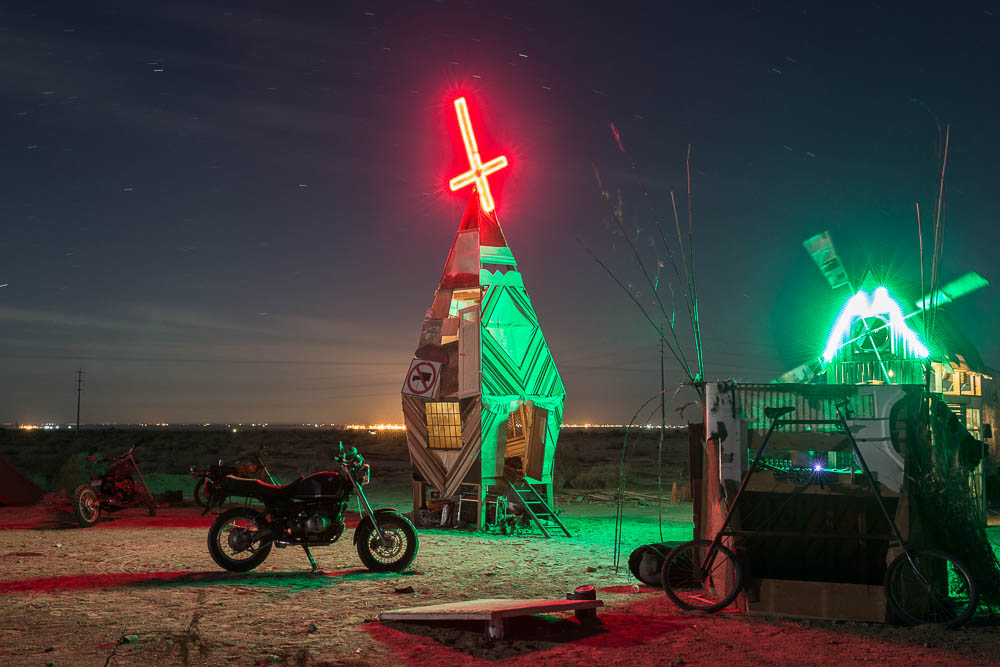
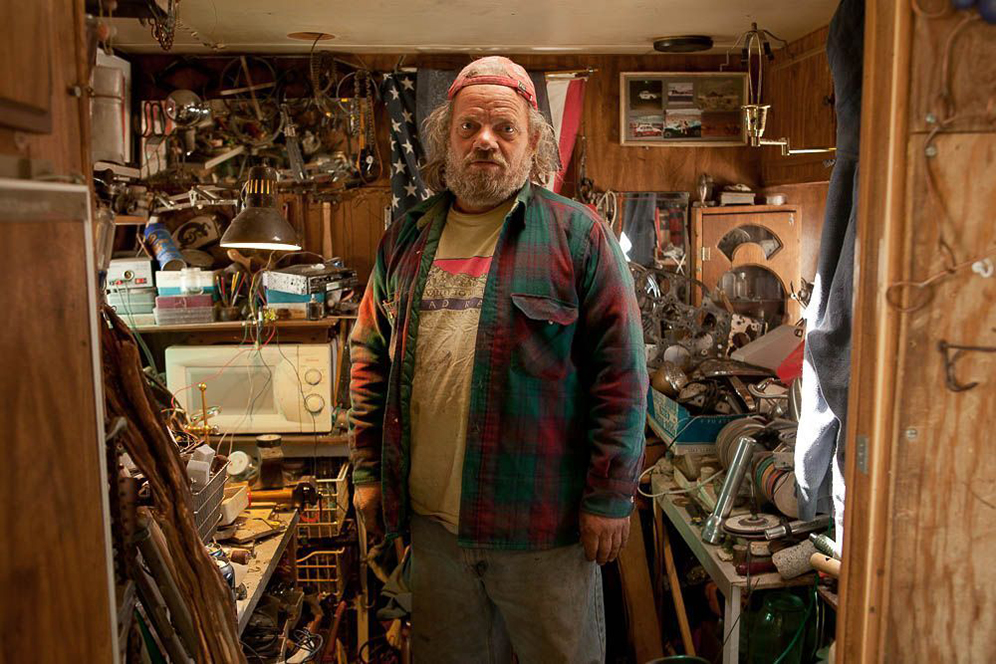
“He goes by Death Valley David and I met him out when I was out in Death Valley. I was out there with some friends that were doing a little film project, so I just tagged along. He was a local who just came over to see what we were up to and I ended up talking with him for a long time. He told me about how he makes a living and we went and hung out in his trailer. I asked if I could take a portrait. He was a little uncomfortable but was into it.”
When you shoot strangers, do you usually let them know that you’re going to shoot them or do you shoot from the hip?
It depends on the photo I want. A lot of times, if you engage the person first, you’re only going to get a certain type of photo after that. So if you want the candid moment on the street, you have to try to get that first. Other times, I don’t want that. The guy in the outfit, I engaged him first. Because when you’re dressed like that in downtown, you’re aware people are going to take your photo. It’s the sort of thing where I just want to let you know. And if you’re like, “No!” Then that’s cool. He was like, “Yeah, fine, whatever.” So he stood for a second and was like, “Okay,” and kept walking. And what happened is that while I had been taking his photo, another woman, a tourist, had come up and was like, “Can I take your photo?” And he was like, “[sigh] Fine.” So while she was taking his photo, I took the second photo [below].
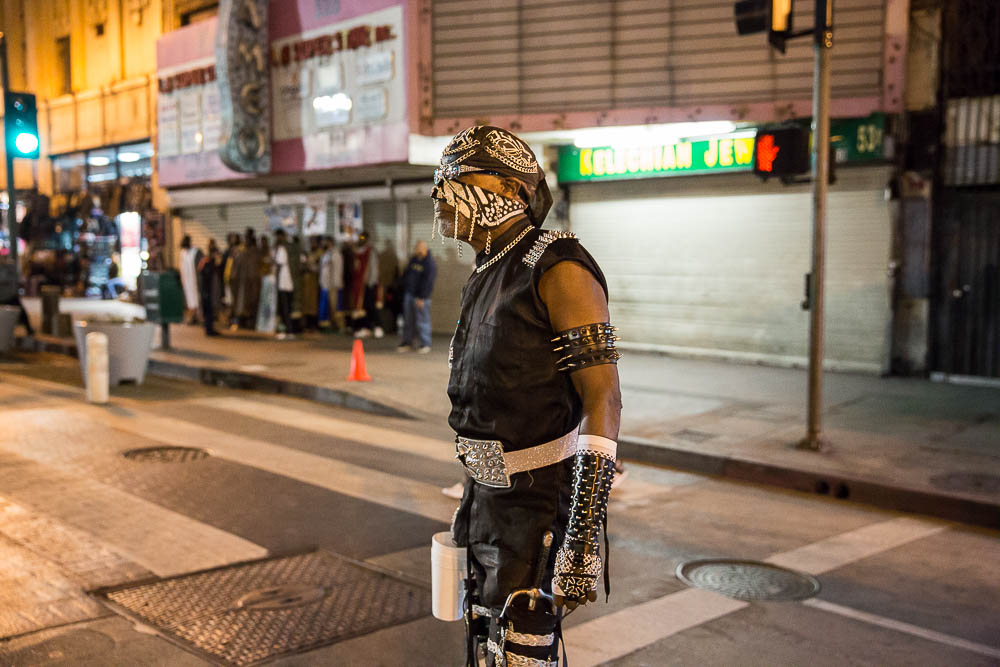
I was talking to Ed [Zipco] a little bit about how you originate from a pre-Flickr blog world of photography and you’ve been self-publishing for [about 10 years]. How do you feel now about the proliferation of Instagram and the state of photography?
It’s a complicated thing, I feel like people are still kind of figuring it out, but it’s gotten so much easier to make images and share them for everyone. The idea of being a photographer doesn’t mean what it used to, but at the same time, I think it’s really fun. I love Instagram. Not only just sharing whatever, but also seeing what my friends are up to. I’ve definitely found it much more interesting than every other form of social media because of the visual component. You can glean so much more from a photograph of where someone is than you can from them saying where they are on Twitter.
So I feel like that has expanded the sharing capability for people. So I love that, but at the same time, of course, I came up at the period where right when I was starting was when everything decided to change [in the early 2000s]… I have my old blog, Sucka Pants [and] I have a professional blog that’s in my portfolio site, and if you look at the work, it’s really different stuff. So the Sucka Pants is still the punk shows and the crazy stuff and the political stuff, which is what it’s always been. But if I just have a nice portrait of someone that’s kind of more calm and collected, that’ll go on the professional site. It’s partially just trying to find better ways to demonstrate the different sides of the work I do.
Because some people think all I do is the crazy, insanity mosh pit stuff, and they don’t know about the other work. But I find that if you lump them together, one can kind of get lost under the other. But it’s an interesting thing that even ten years later I’m still trying to figure out the best way to handle it.
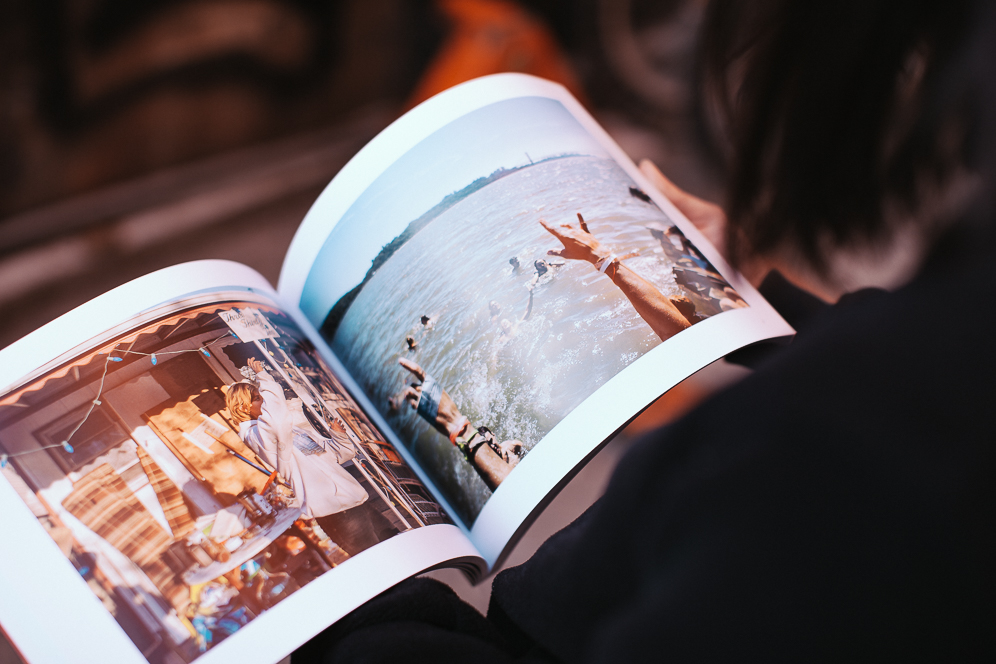
Tod Seelie’s Bright Nights photo book, published in late 2013.
Even when we were flipping through [your photo book Bright Nights] there was some really subdued imagery… I don’t feel like the interviews that I read with you about the book mentioned or used any of those photos.
Right, it’s that thing of I feel like they get buried. So I’m trying to find ways to create more breathing room. It’s a bit of a challenge, but I’ve always had the problem with the “I don’t have an elevator pitch for you” issue. I feel like it’s a little more complex than that.
I switched to photography before I graduated. The thing is, when I look at the photographers I admire the most, none of them have an elevator pitch. They literally have just been shooting what they’re attracted to, and it’s one giant body of work. Robert Frank, William Eggleston, Lee Friedlander, Nan Goldin. They’re not, “I shoot this. I did a series on this.” So that’s what I grew up looking at, that’s what I understood was, in my mind, the best way to work. Because when I looked at the peoples’ whose work blew me away, they were all approaching it the same way.
So that’s how I’ve always approached it, but I’ve found the attitude has changed and people want quicker, shorter, more digestible.
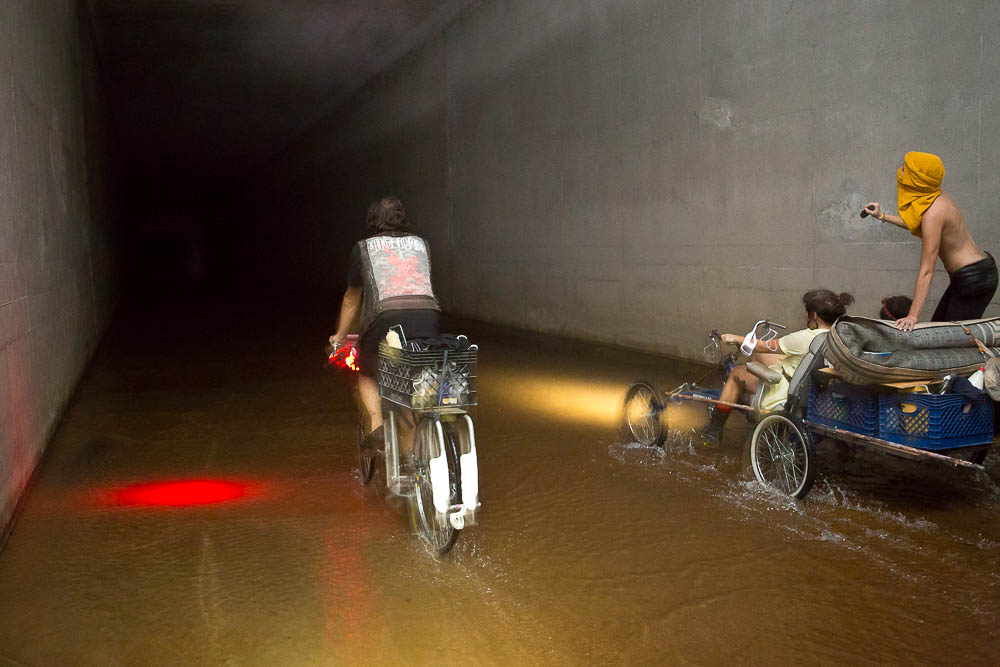
Deep in the annals of the LA river. Above and below photos from “Outland Empire” series.
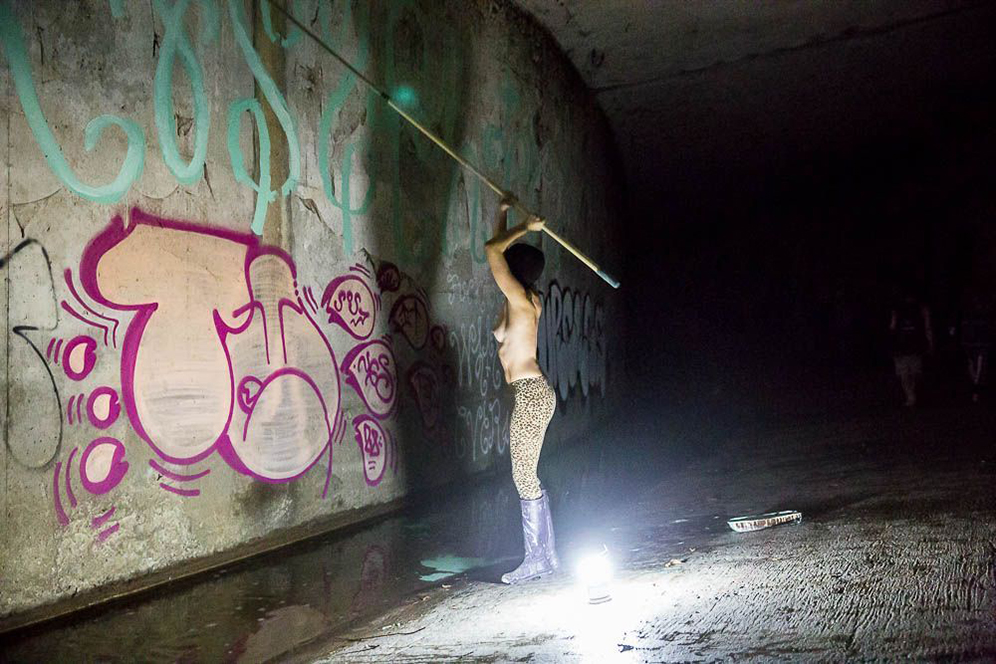
“Secret spots where no one cares are harder and harder to find these days.”
You mentioned that you knew you were interested in fine art since junior high. Can you tell us more?
It’s all I was ever interested in. Everything else was just details. I just wanted to make art, I always enjoyed doing different types – drawing, painting, sculpture, printmaking, jewelry, I did enameling. Photography was just in the mix. Photography is interesting because it worked completely differently than everything else. The other art forms consisted of going into a studio and making something out of nothing. Photography was going out into the world and finding something in something. So I found that really intriguing, which is why I was always interested and kept doing it even when I was studying sculpture.
When it came to, “What do I want to make in the studio?” What do I want to create?” It ended up being that I wanted to create transformative spaces, which is why the work was referencing James Turrell and Robert Irwin and that realm. I wasn’t interested in making an object, I wasn’t interesting in making a thing on a wall. I wanted to make an experience.
So, funny thing is, I’d been making sculpture with light and then moved to photography, which is making art with light in a different way.
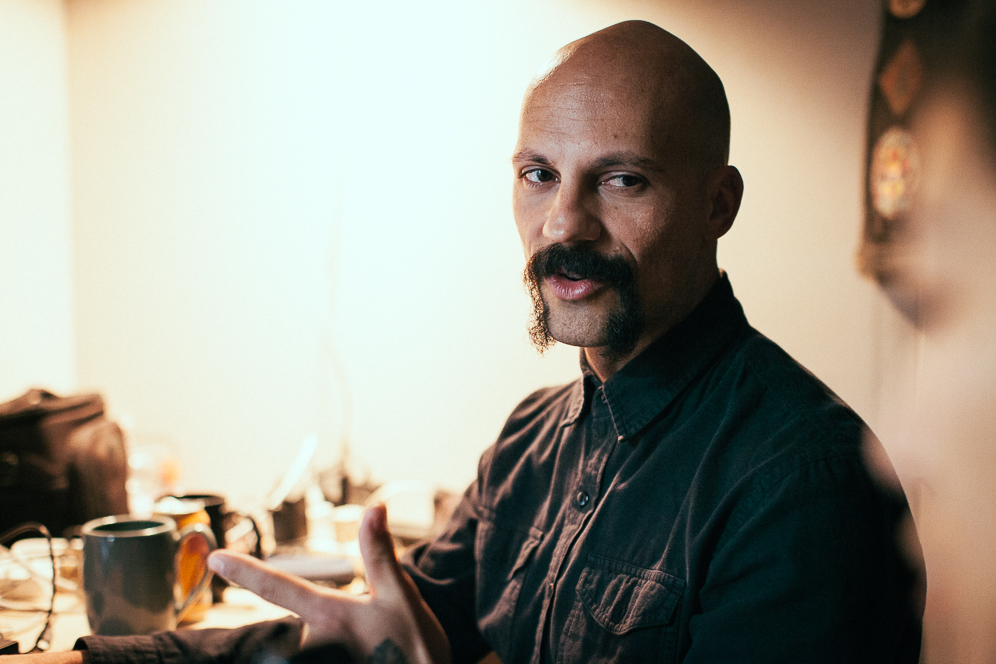
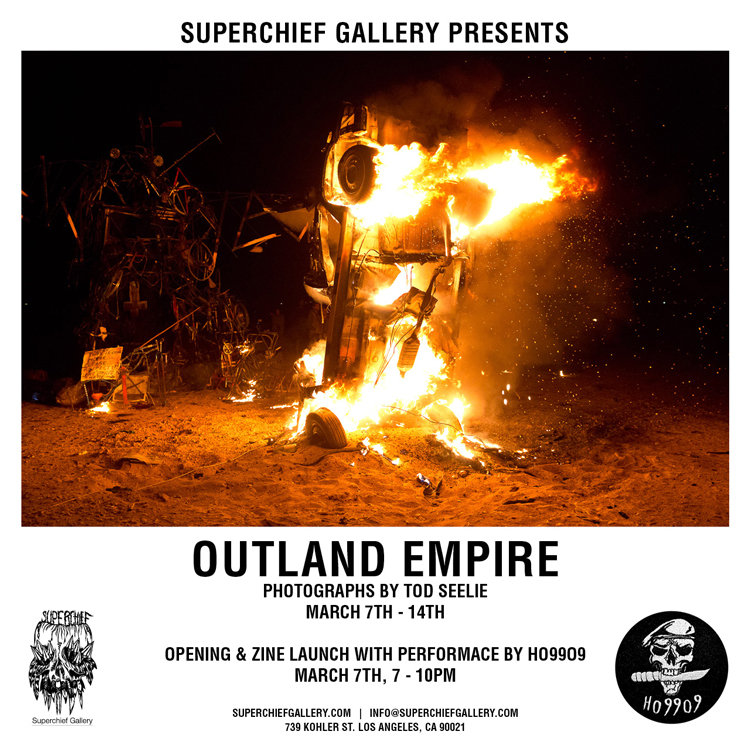
::
Tod Seelie’s “OUTLAND EMPIRE” will be having its opening reception at Superchief Gallery this Saturday, March 7th, from 7-10pm. The night will have a zine launch and a performance by Ho99o9. 739 Kohler St. Los Angeles, CA 90021.

